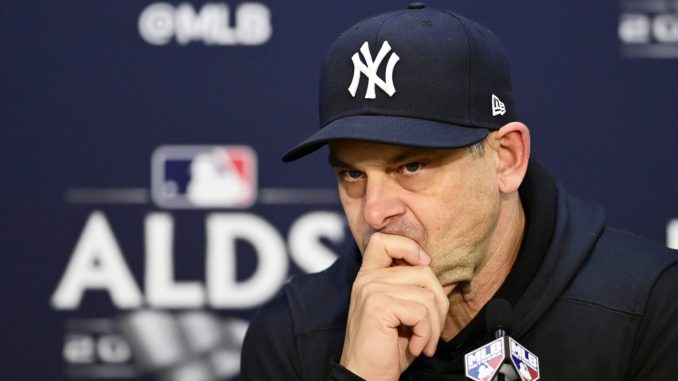
New York Yankees worst nightmare…
The New York Yankees, one of the most storied franchises in sports history, have always been synonymous with success. With 27 World Series titles and a rich tapestry of legendary players, their fan base is accustomed to winning. However, in recent seasons, the shadows of disappointment have loomed large, and now, the worst nightmare for Yankees fans has become a chilling reality.
As the season began, expectations were sky-high. The front office had made bold moves to bolster the roster, acquiring star players and emphasizing a return to the playoffs. Yet, despite these efforts, the team struggled out of the gate, plagued by injuries and inconsistent performance. The once-vibrant roster seemed to lack cohesion, and fans were left grappling with a sense of foreboding.
The first signs of trouble emerged when key players went down with injuries. The ace of the pitching staff, a perennial All-Star, found himself on the sidelines, unable to contribute when his team needed him most. Meanwhile, the lineup, once filled with power hitters, saw slumps from its marquee names, leaving fans questioning their once-reliable offensive juggernaut. As games slipped away in the late innings, the haunting whispers of “here we go again” echoed through Yankee Stadium.
As summer turned to fall, the Yankees’ plight became more pronounced. The competitive landscape of the American League had shifted dramatically. Teams that had once been seen as underdogs were now rising stars, while the Yankees found themselves mired in mediocrity. The division rivals—once considered easy targets—had turned the tables, creating a sense of urgency that weighed heavily on the organization.
Amidst this turmoil, whispers of a managerial shakeup grew louder. Fans and analysts alike began to question the leadership style and strategies of the coaching staff. Was it time for a new voice in the clubhouse? Could a fresh perspective rejuvenate a stagnant roster? The pressure mounted, and with each passing loss, the specter of change loomed larger.
As the postseason approached, the Yankees faced the very real possibility of missing out altogether. For a franchise that has prided itself on October baseball, the idea of sitting at home during the playoffs was nothing short of catastrophic. The weight of history hung heavy—Yankees fans expect championships, not rebuilding years. The thought of enduring a prolonged period of mediocrity sent shivers down the spine of even the most steadfast supporters.
The tipping point came when a critical series against a division rival resulted in a sweep, cementing the Yankees’ status as also-rans in the playoff race. The stadium, usually filled with raucous cheers, became a chorus of boos and frustrated murmurs. Players, once beloved heroes, found themselves under the harsh glare of scrutiny, as social media erupted with criticisms and calls for drastic measures.
In the aftermath, the reality set in: the Yankees were not just facing a rough season; they were confronting an identity crisis. The very essence of what it meant to be a Yankee—dominating the league, thriving in high-pressure moments—was at stake. The path forward was murky, and as the season drew to a close, one thing became painfully clear: for the Yankees, this was more than just a bad year; it was a reckoning. A worst nightmare come to life.

Leave a Reply